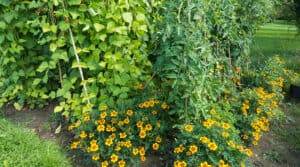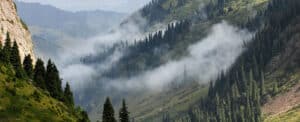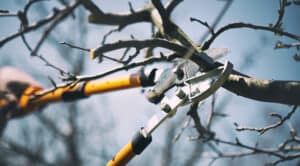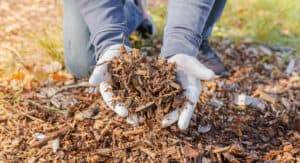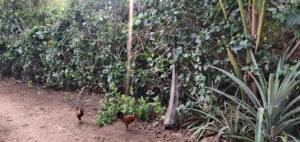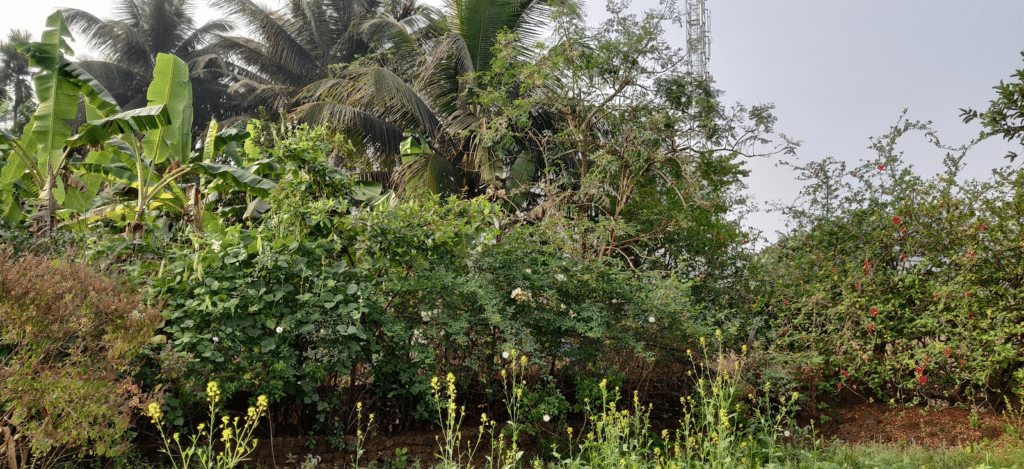
Living fences have been an integral part of our traditional practices in India and as we dive deeper into indigenous wisdom, we get to experience a highly diverse range of plants that not only create fences but also are sources of yield and self-contained ecosystems.
From building privacy hedges to deterring wild animals and cattle, they always come in handy as an affordable solution for the local farming communities.
Here’s a list of plants selected over years of observations and understandings of our local ecosystems and human needs.
1. Carissa Carandas
Commonly known as Karvanda in Marathi, it is a beloved living fence plant, preferred for its hard and thorny stems that provide protection against cattle and act as excellent windbreaks.

It can grow from 7 to 10 ft high and similar or wider spread depending on the availability of sunlight and space as it can crawl up on large trees, other bushes, fences, or rooftops. It has thick foliage and fragrant flowers that host bees and other beneficial insects.
The delicious edible berries are a seasonal delicacy and are consumed for their medicinal and nutritional values, they are an excellent source of iron, vitamin C, tryptophan and more.
Once established it’s drought tolerant and creates a cool micro-environment under its spread as the mulch around the base of the plant helps retain soil moisture and thus grows with minimal human intervention.
It can be seen intercropped with Caesalpinia bonducella and cacti.
2. Lawsonia inermis (Mehendi)
Locally known as Henna, it is a common hedge plant in wet and dry climate zones of India. It is a vigorously growing shrub ( 6 to 20 ft high), forms a dense hedge and is usually planted along with mulberry, cacti or jatropha.

It grows well in both dry and moist places however needs irrigation if planted in dry or silty soils. It is preferred for fencing due to lower maintenance and the ability to tolerate both high as well as low soil moisture. It cannot tolerate waterlogged soils.
The plant is highly valued in Ayurved and Chinese medicine for its healing abilities for various ailments because of its antioxidant, antibacterial properties and cooling properties. The leaves are made into a fine powder and used as a dye for skin and hair and also used to treat skin diseases.
3. Vitex negundo
Vitex negundo, a large aromatic shrub, has been a favorite for ages for its universal adaptation and tolerance to external conditions.
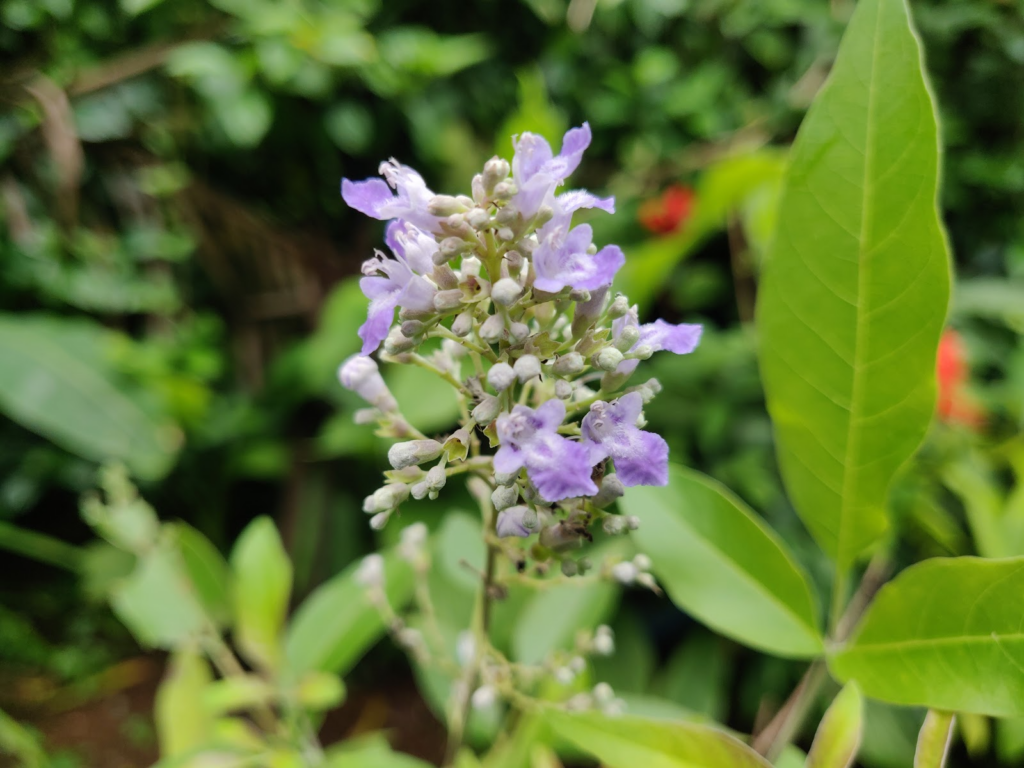
It can grow in the range of 7 to 25+ ft in height and form a dense hedge. It’s evergreen and retains most of the leaves even during the driest seasons.
It is highly unpalatable for cattle making it the most preferred living fence shrub for creating boundaries around fields and plantations here in India. It’s adaptable to diverse soil pH and is drought tolerant. Quick and easy propagation from cuttings, is done in monsoon and the plant mostly establishes itself within a year.
Read more about growing vitex here.
4. Jatropha curcas
Found across tropical and subtropical zones, it is an evergreen perennial soft-wooded shrub growing up to 20 ft high.

It is planted across the boundaries of fields and houses along with other plants for protection from livestock as it is highly unpalatable to goats and cattle.
It is easily propagated by seeds or cuttings and grows rapidly. It is drought-tolerant and can adapt to a wide range of climates and soils and grows well without human intervention. It is pruned and looped or weaved into desired heights to suit the purpose of the living fence.
It is highly medicinal and the stems and leaves are used for dental hygiene to relieve toothache and strengthen gums. It is chosen for soil conservation and soil building activities due to its ability to shred its leaves to avoid loss of moisture due to transpiration and the mulch around helping trap moisture in the soil.
5. Caesalpinia Bonducella
Another favorite from the age-old low-budget farming solutions, commonly known as Sagargota or knicker nut is a thorny and prickly shrub growing up to 20 ft high.
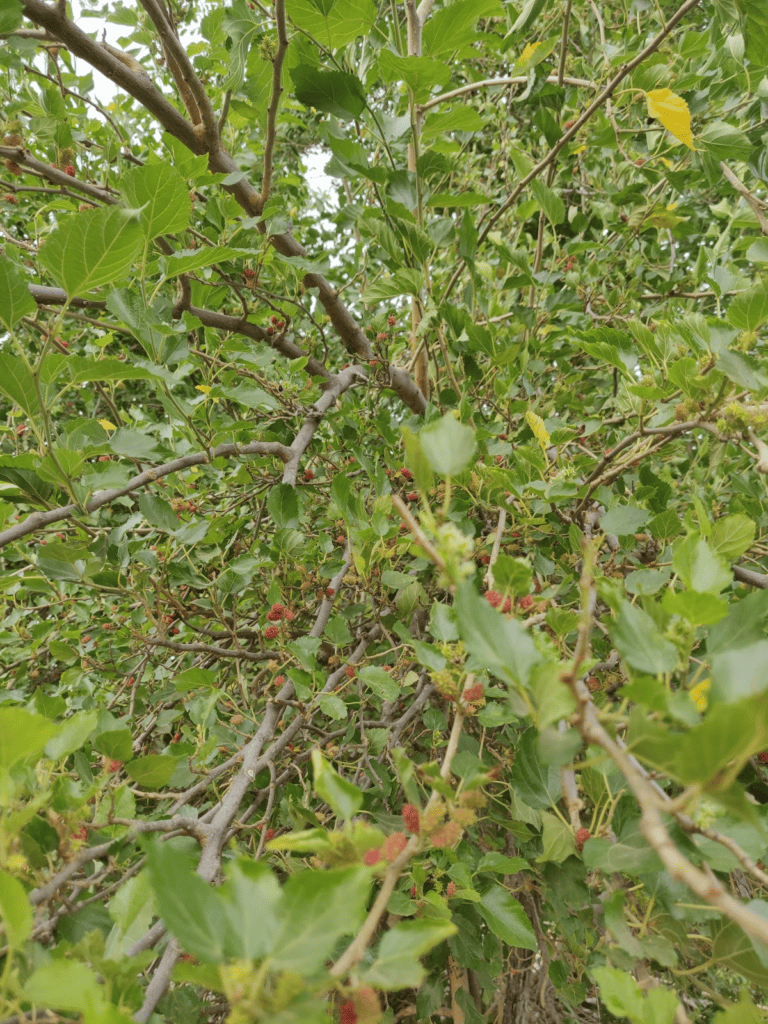
It is drought tolerant, can adapt to diverse soil pHs and propagates easily from seeds. The branches and fruits are prickly and form dense bushy zones which help prevent and repel animal and rodent movement.
The flowers attract beneficial insects and pollinators and seeds have high medicinal properties, used especially to treat fever and thus also known as fever nuts.
6. Mulberry
Preferred across rural India, mulberries are a great energy-efficient and quick-growing option for creating boundaries.

They are easily propagated from cuttings, can tolerate diverse soil conditions, and have moderate tolerance towards drought.
They are preferred more for marking boundaries and cultivating fodder as a byproduct, the leaves being highly palatable for cattle, the plants need to be intercropped with other thorny plants in open grazing zones,

There are more than 19 different known varieties of mulberry trees around the world, that’s a lot to choose from ;).
7. Damask Roses
Also known as Rosa Damascena, these varieties are preferred for their fast growth, dense thorny branches with curved prickles and easy propagation from cuttings.
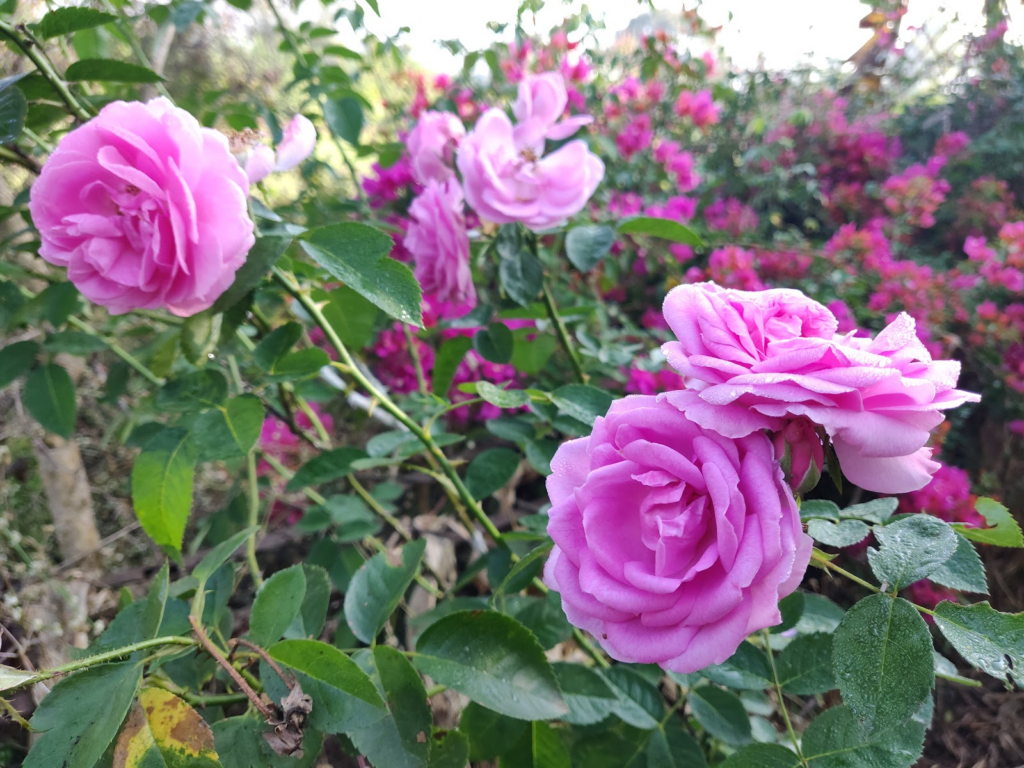
They can grow up to 7 ft in height and crawl up on other bushes, fences and rooftops. They flower more than once and attract beneficial insects.
Once established, they need very limited human intervention and can survive during dry periods with limited or no irrigation. They can adapt to diverse soil types but cannot grow in waterlogged and highly compacted soils.
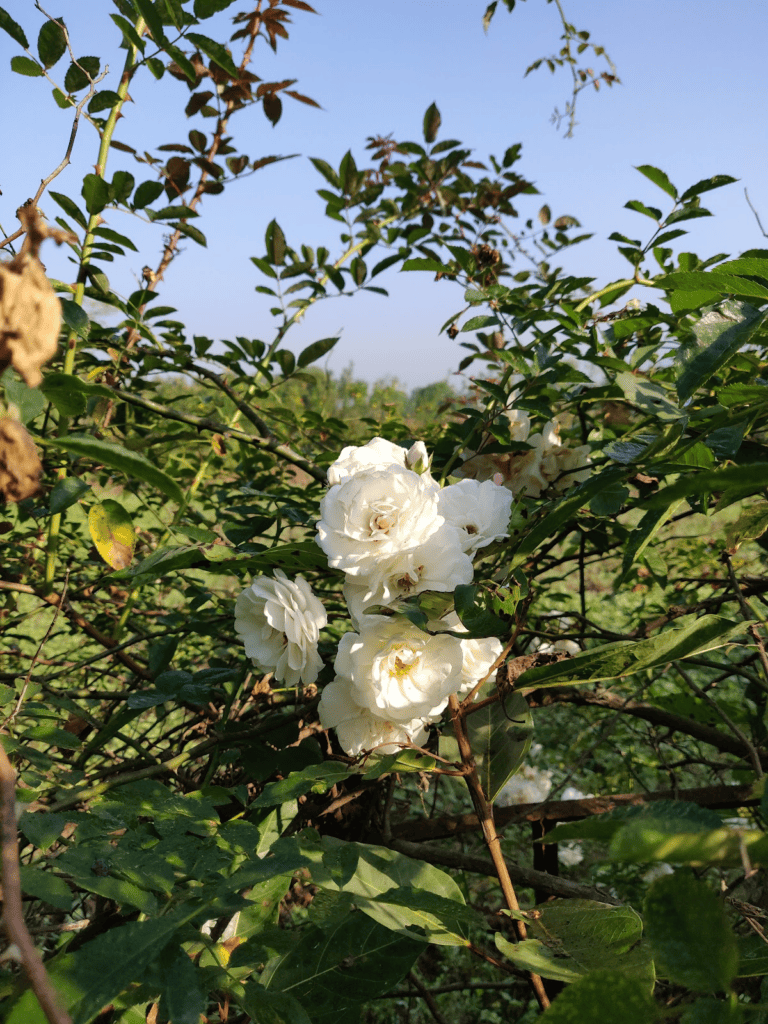
They are known for their medicinal properties and cooling effects. The petals are used for brewing tea, extracting rose water, making jam and cooking or flavoring spice.
8. Bambusa arundinacea (Hedge Bamboo)
The clumping bamboo is native to Asia, especially the thorny varieties. They are preferred for hedges and farm boundaries due to the dense clumping, creating an absolutely impenetrable zone once established.

The clumping is dense and keeps growing in radius if left unattended and the bamboo can grow up to 15+ ft high. They are propagated from shoots, can grow in diverse soil types and sustain without irrigation in dry seasons.
Farmers periodically harvest mature bamboo to allow new shoots to grow from within.
The dry bamboo is used for making temporary seasonal fences around vegetable gardens or as partitions for livestock.
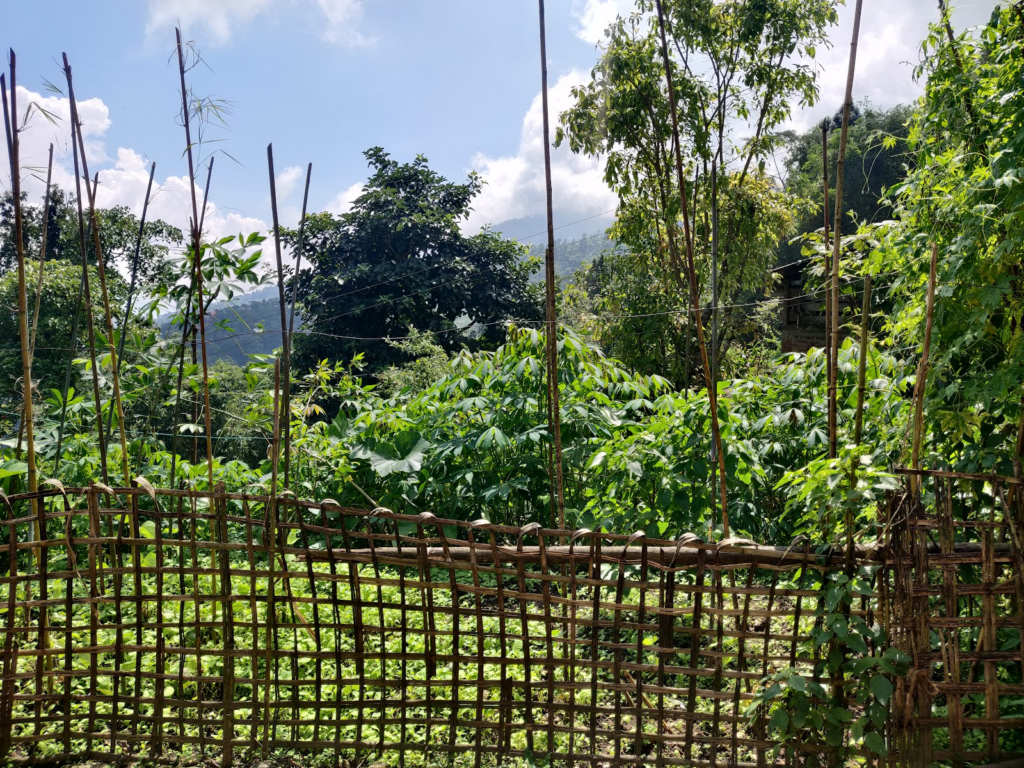
9. Hibiscus
Hibiscus being an evergreen shrub also offers resistance to fire up to some extent and can adapt to diverse soil types.

In tropical and subtropical zones, it grows without external irrigation once established. Traditionally the stems are intertwined and woven to form a dense hedge that acts as a barrier and even windbreak.
10. Agave (Agave americana)
Being a recent addition, Agave has gained popularity in regenerative farming due to its fire resistance and ability to grow in dry and degraded soils.

It is incorporated around the boundaries of farms, especially across fire-prone zones to reduce and slow down the impact of fires entering with the wind.
Once planted, the plant self propagates forming clumps of new plants around leading to the formation of a dense shade zone. Further to which the saw-toothed ridges on each leaf margin help repel and limit animal moments as well.
11. Cactus

Local cacti are integrated into fences for additional protection or to fill up empty spots which have the potential to turn into more significant gaps.
Traditionally a cacti-only fence is created for areas that need stronger protection from cattle, wind and vision break.
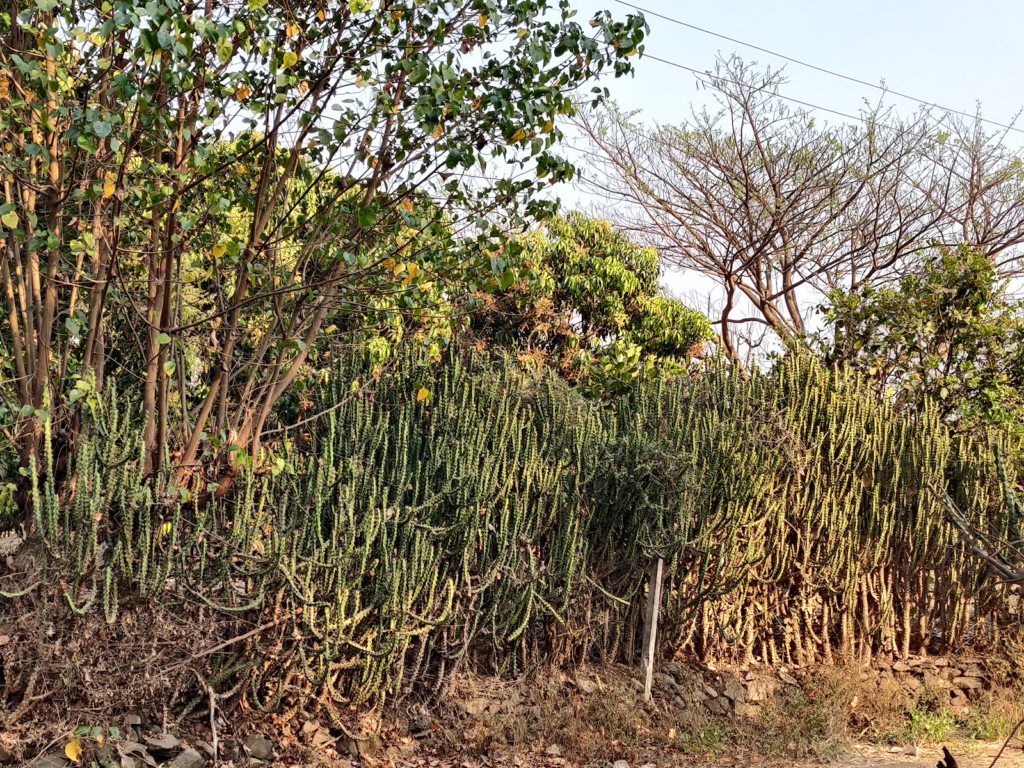
They are made by creating stone bunds filled with healthy soils, raised above ground level to prevent water logging around root zones during wet seasons.
12. Justicia adhatoda
Adathoda, commonly known as Adulsa in our native language (Marathi) is a medicinal plant, incorporated into living fences for ages. It’s known in indigenous medicinal systems for its ability to treat bronchitis.
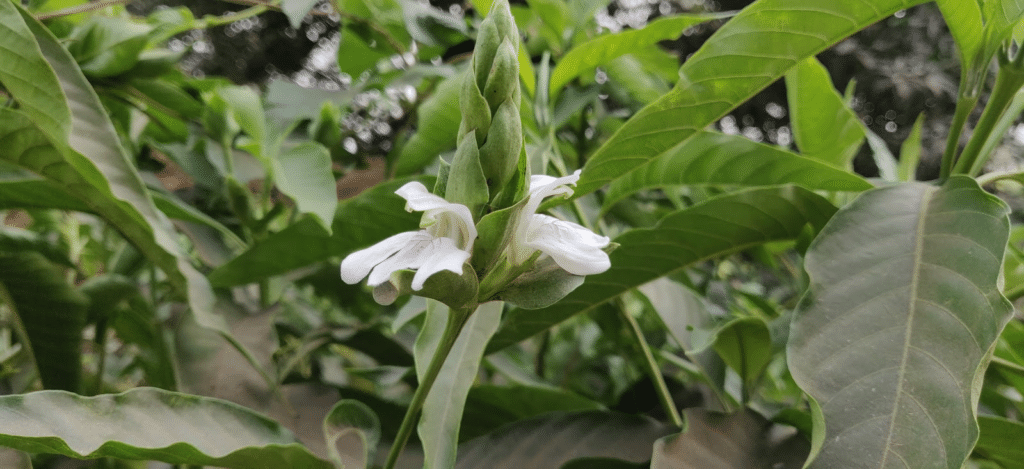
It’s a shrub growing 5 to 10 ft. in height with dense foliage creating a hedge-like effect.
The leaves are extremely bitter and thus non-palatable for cattle, making them suitable to grow around the outer sides of farm boundaries. The plant grows well in diverse soil conditions as long as the soil drains, it cannot tolerate waterlogging.
Conclusion
Other climbing and crawling plants like Jasmine, Butterfly pea, Malabar spinach, Passionflower, Passion fruits, Red lagoon creeper, a wide variety of beans and more are used to add volume to the fence.
For more varieties, check out this list maintained by Agriculture for Everybody.
Although most of the plants listed are India-specific, the generic properties, families and behaviors are to be considered when selecting plants locally. Keep in mind that some of these plants may be invasive in certain areas, so it’s important to do your research before planting them.
Our Guide to Growing Living Fences article will help understand how to do this efficiently.
The thumb rule is to observe the plants around you to spot similarities and select the relevant native plants whose properties best suit your needs.


